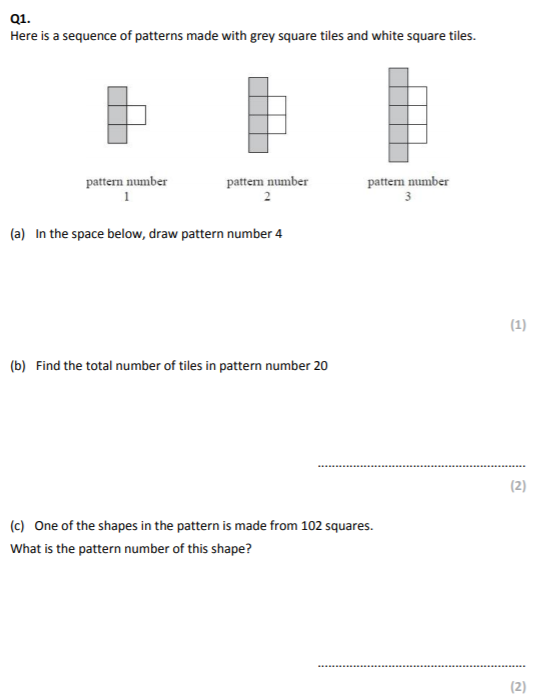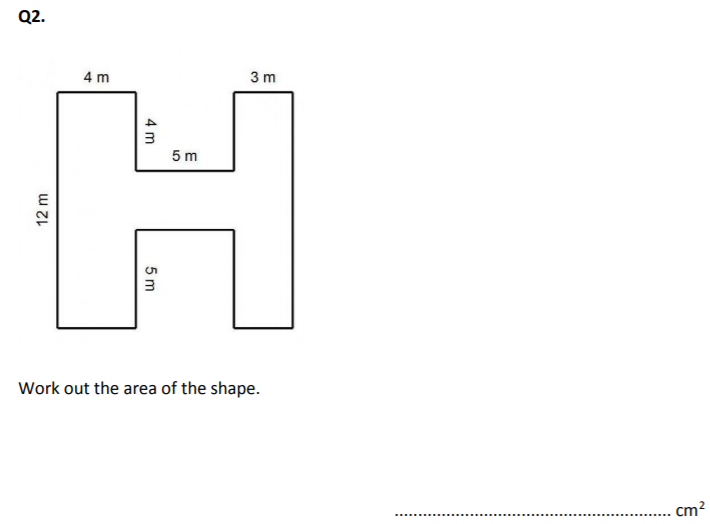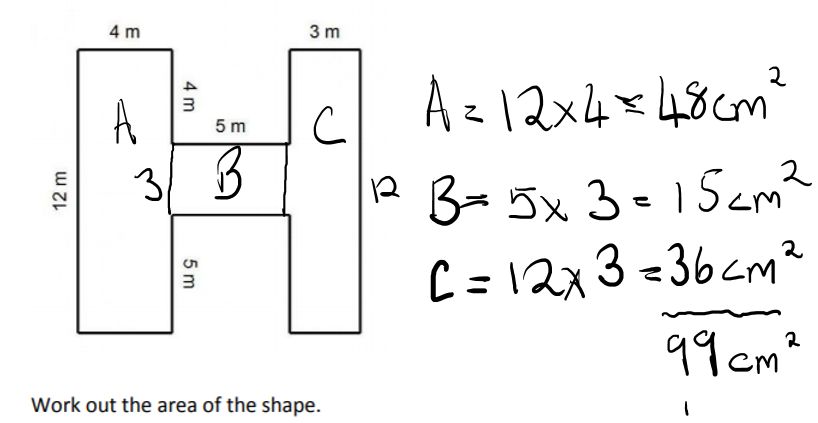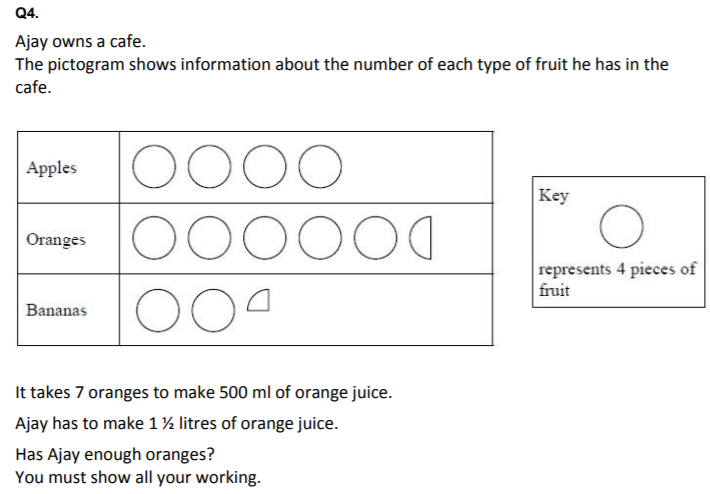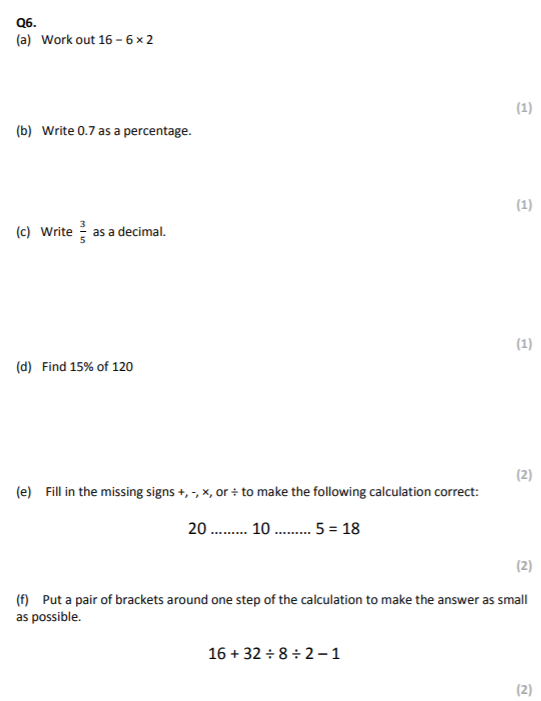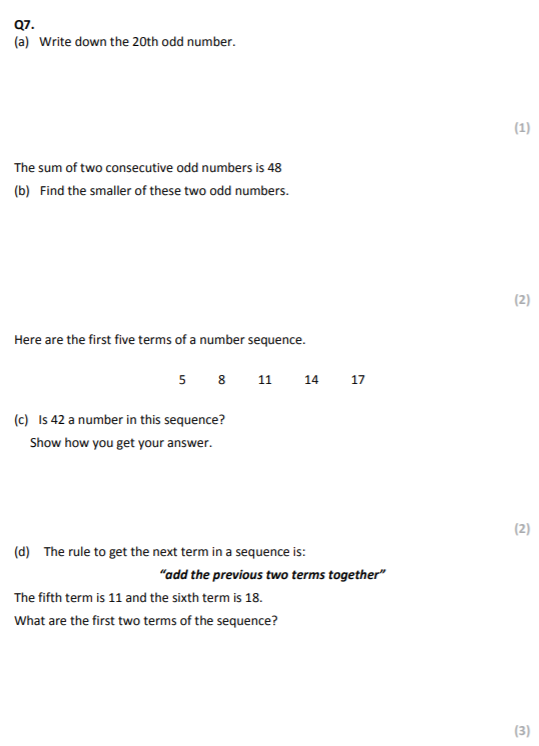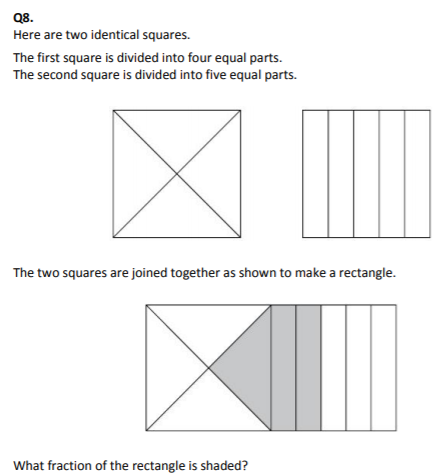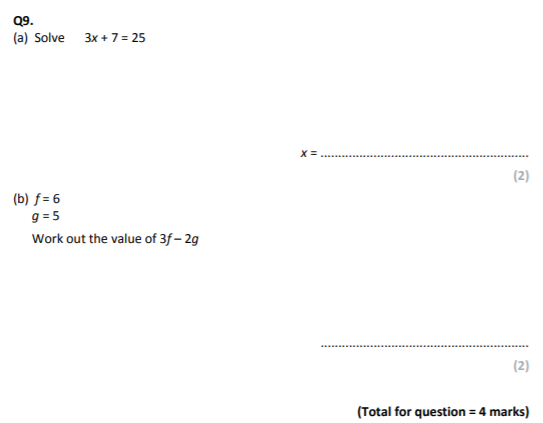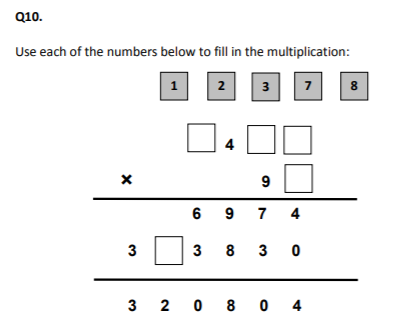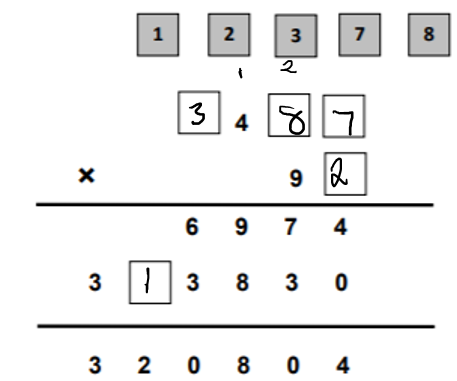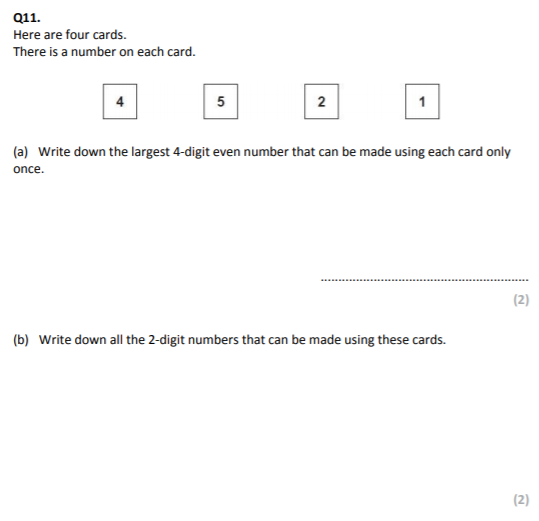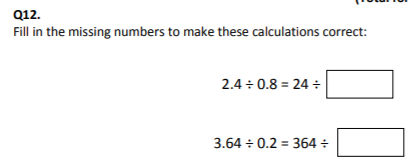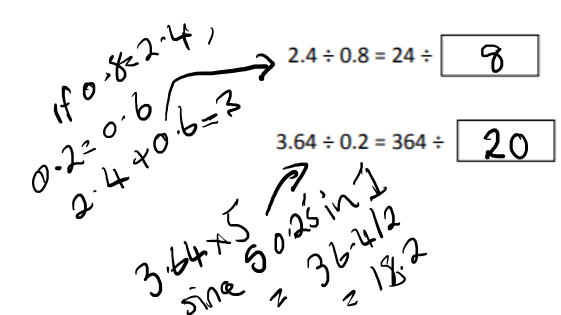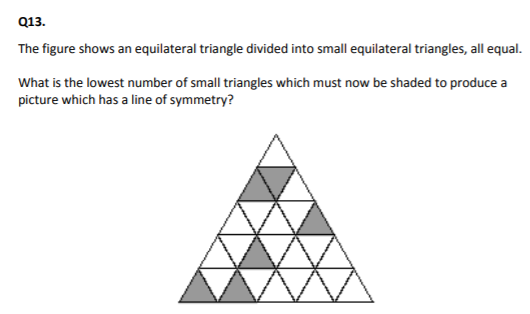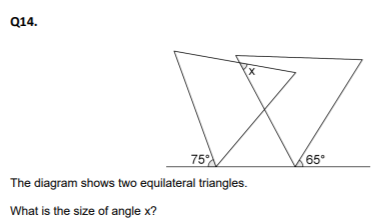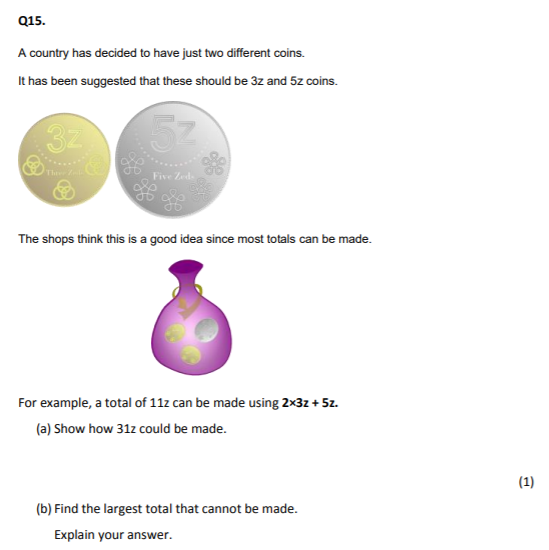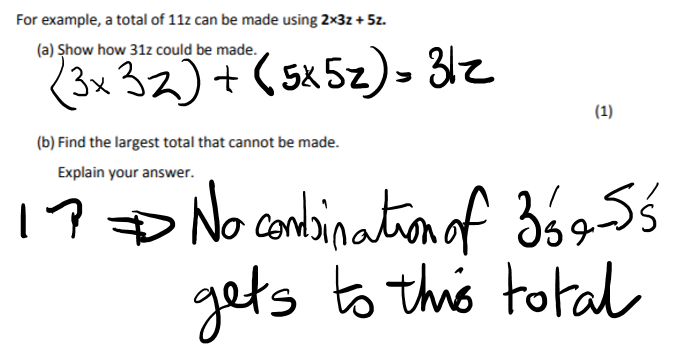a) See below

b) 41 Tiles
- Pattern 1 = 3Grey + 1White = 4 tiles
- Pattern 2 = 4Grey + 2 White = 6 tiles
- Pattern 3 = 5Grey + 3 White = 8 tiles
- So rule is (Pattern number + 1) + Pattern number = Total number of tiles
- (20+1)+20 = 41
c) 50
- The pattern starts at 4 tiles and goes up in 2s. But then you have to reduce it by 1 to get to the pattern number. So for Pattern 3, this is 8 tiles. 8 divided by 2 = 4. Less 1 = 3. Confirmed above that this is Pattern 3
- Therefore, if you have 102 tiles, then this is 51.
- 51 less 1 = 50
Would you like to see similar questions? Click on one of the links below:
Would you like to see similar questions? Click on one of the links below:
17
130/8 = 16.25
Cannot buy 0.25 of a packet so need to buy 17 packets
Would you like to see similar questions? Click on one of the links below:
He has enough oranges
- Each orange in the pictogram is 4 oranges
- So 5 oranges above x 4 per picture = 20 oranges
- Plus half of an orange in the pictogram = 2 oranges
- So total number of oranges = 22 oranges
- 1 1/2 litres = 3 x 500ml. So 3 * 7 oranges per 500ml = 21 oranges
- He has enough in oranges
Would you like to see similar questions? Click on one of the links below:
Would you like to see similar questions? Click on one of the links below:
a) 4
BIDMAS. Do multiplication first. So 16-12 = 4
b) 70%
When converting decimals to percentages, just move the decimal place 2 places to the right. So 0.7 becomes 70.
c) 0.6
3/5ths as a decimal. To convert denominator to 100, multiply both numerator and denom by 20. So 60/100 = 0.6
d) 18
15/100 * 120/1
e) 20 – 10 /5 = 18
Do division first according to BIDMAS. Then subtraction. So 20-2 = 18
f) 16+(32/8/2)-1 = 16 + 2 – 1 = 17
Would you like to see similar questions? Click on one of the links below:
a) 39
1,3,5,7,9,11,13,15,17,19,21,23,25,27,29,31,33,35,37,39
b) 23
23 & 25
c) NO. 42 is not in the sequence
Going up in 3s. So next is 20,23,26,29,32,35,38,41,44
d) To be updated
Would you like to see similar questions? Click on one of the links below:
13/40
- You have 1/4 shaded of the first square. 2/5ths shaded of the second square
- This is a question of being able to convert both fractions to the same denominator
- So this would be 20. 1/4 becomes 5/20 and 2/5ths is 8/20
- Then add both these together to get 13/40. Note its not 13/20 as you have to add the squares together which is unlike a normal fraction addition
Would you like to see similar questions? Click on one of the links below:
a) x = 6
- 3x + 7 =25
- 3x=25-7
- 3x=18
- x = 6
b) 8
- 3f – 2g
- (3*6) – (2*5)
- 18-10
Would you like to see similar questions? Click on one of the links below:
Would you like to see similar questions? Click on one of the links below:
a) 5412
b) 45,42,41,54,52,51,24,25,21,14,15,12
- Start with each digit at a time
Would you like to see similar questions? Click on one of the links below:
Would you like to see similar questions? Click on one of the links below:
5
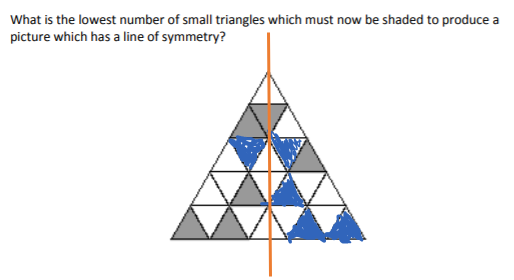
Would you like to see similar questions? Click on one of the links below:
60°
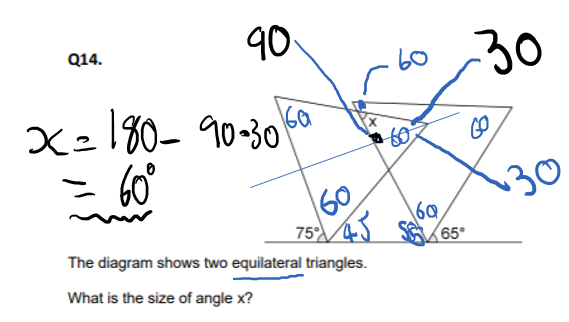
Would you like to see similar questions? Click on one of the links below:
Would you like to see similar questions? Click on one of the links below:


